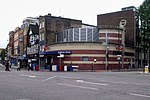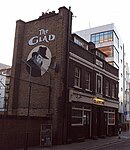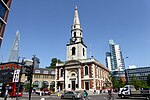University College of Osteopathy
1915 establishments in the United KingdomEducational institutions established in 1915Osteopathic colleges in the United KingdomUniversities and colleges in London
The University College of Osteopathy (UCO), formerly the British School of Osteopathy (BSO), is the largest and oldest school of osteopathy in the United Kingdom. The UCO holds Recognised Qualification (RQ) status from the statutory regulatory body for osteopathy in the UK, the General Osteopathic Council. The institution was granted degree awarding powers in October 2015. It was given University College status in September 2017 from the UK Privy Council, and it is an exempt charity.
Excerpt from the Wikipedia article University College of Osteopathy (License: CC BY-SA 3.0, Authors).University College of Osteopathy
Borough High Street, London Borough (London Borough of Southwark)
Geographical coordinates (GPS) Address External links Nearby Places Show on map
Geographical coordinates (GPS)
| Latitude | Longitude |
|---|---|
| N 51.500105 ° | E -0.094524 ° |
Address
The University College of Osteopathy
Borough High Street 275
SE1 1JE London, Borough (London Borough of Southwark)
England, United Kingdom
Open on Google Maps










